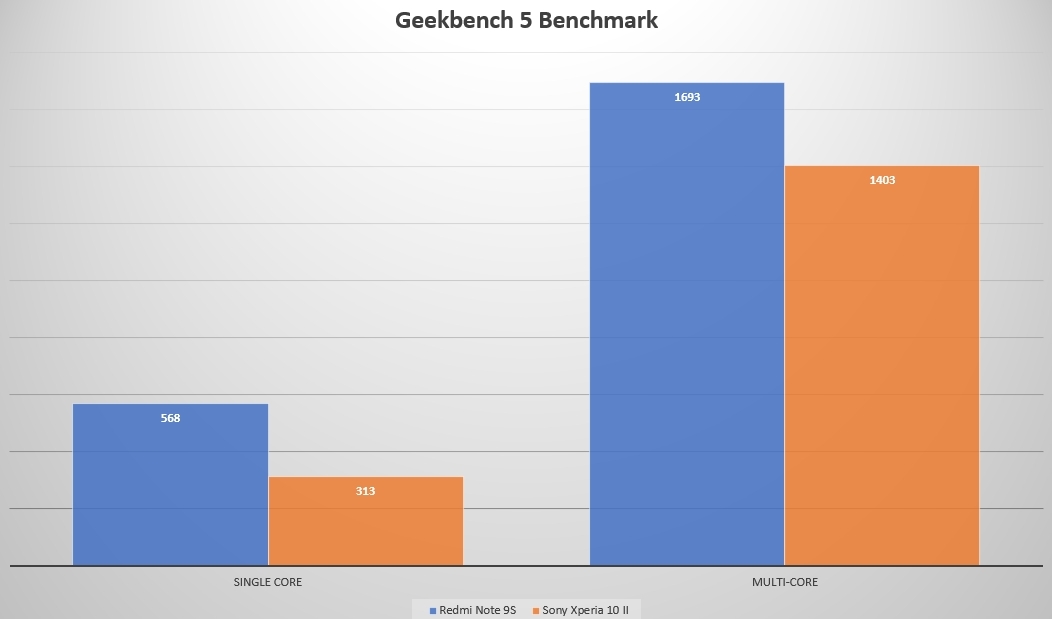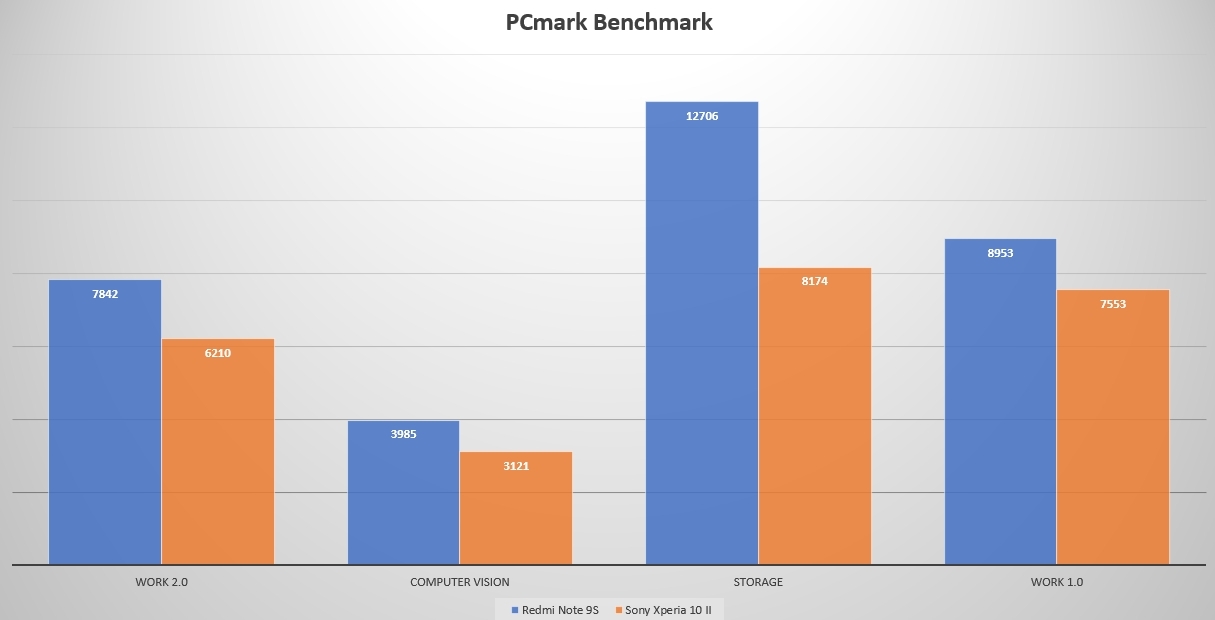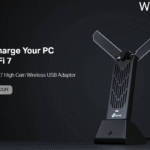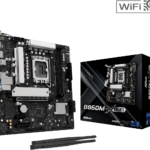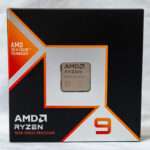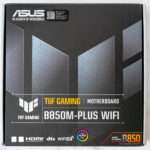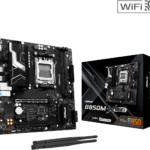
- Sony Xperia 10 II specs
- Video remark: During our walkabout and we tested disable Electronic Image Stabilization “EIS”, while capture the video on 4K recording is much smoother. However, the 1080P 30frame with enable EIS seem working fine.
- 1080P 30fps EIS
- 1080P 30fps disable EIS
- 4k 30fps EIS
- 4k 30fps disable EIS
- Performance, Benchmarks and Gaming
- PCMark Benchmark
- 3DMark Benchmark
- A1 SD Benchmark
- Geekbench 5 Benchmark
- Sony Xperia 10 II
- Pros
- Cons
Sony Xperia 10 II specs
- Body: 157x69x8.2mm, 151g; Gorilla Glass 6 front and back, plastic frame; IP65/68 rating; Black, White, Mint Green, Berry Blue color options.
- Screen: 6″ OLED, 2520x1080px resolution, 21:9 aspect ratio, 457ppi; 60Hz refresh rate.
- Chipset: Snapdragon 665 (11nm): Octa-core CPU (4×2.0 GHz Kryo 260 Gold & 4×1.8 GHz Kryo 260 Silver); Adreno 610 GPU.
- Memory: 4GB RAM, 128GB built-in Emmc storage, microSD slot (shared with SIM slot 2).
- OS/Software: Android 10.
- Rear camera: Wide (main): 12MP, 1/2.8″ sensor, 26mm equiv. focal length, f/2.0 aperture, Dual Pixel PDAF. Telephoto: 8MP, 1/4″, 52mm (2x), f/2.4, PDAF. Ultra wide angle: 8MP, 1/4″, 16mm, f/2.2, fixed focus. 4K/30 video recording.
- Front camera: 8MP, 1/4″, 24mm, f/2.0, fixed focus. 1080p/30fps video recording.
- Battery: 3,600mAh, 18W wired charging support (PD + Quick Charge 3.0).
- Misc: Capacitive side-mounted fingerprint reader; NFC; 3.5mm headphone jack.
The Xperia 10 II is — exactly what you’d expect from a company that makes some of the best televisions out there. The pixel density of 457ppi and aluminum for the mid-frame and Gorilla Glass 6 on both the front and the back. And it’s glass of the glossy kind, aka the kind that picks up fingerprint smudges extremely easily. And an IP65/68 rating means it’s resistant to water and dust too.
In back, there’s a vertical pod in the top left corner containing the three camera: one 12MP camera and two 8MP camera. An LED flash is mounted above this pod. Rounding up the rear are Sony and Xperia logos (middle and bottom).

All buttons are on the right hand side: the fingerprint scanner is built in the power key in the middle, the volume keys are above it and lack of the dedicated camera shutter key. I would love the camera shutter camera button.
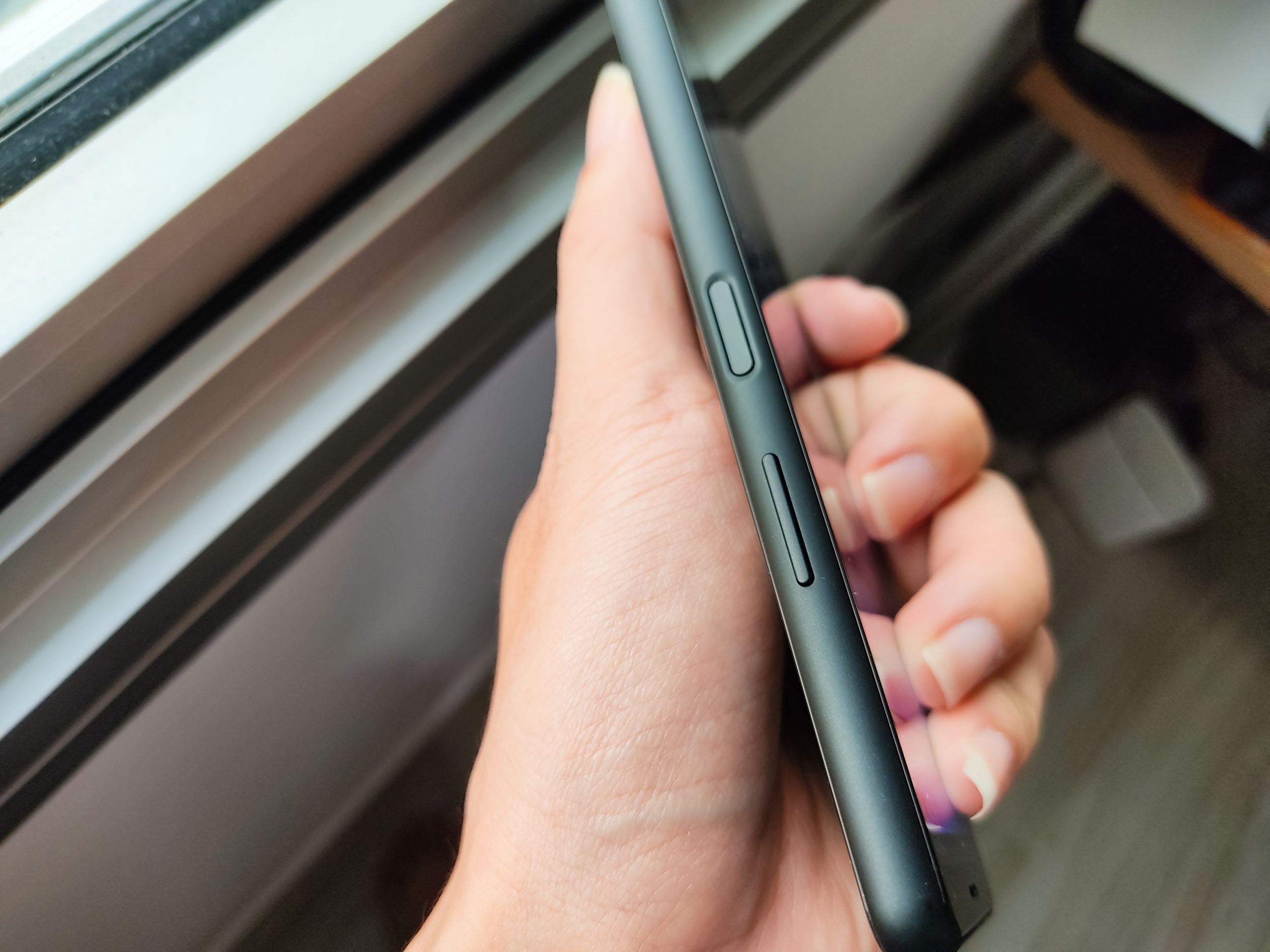 3.5mm headphone jack at the top with microphone.
3.5mm headphone jack at the top with microphone.
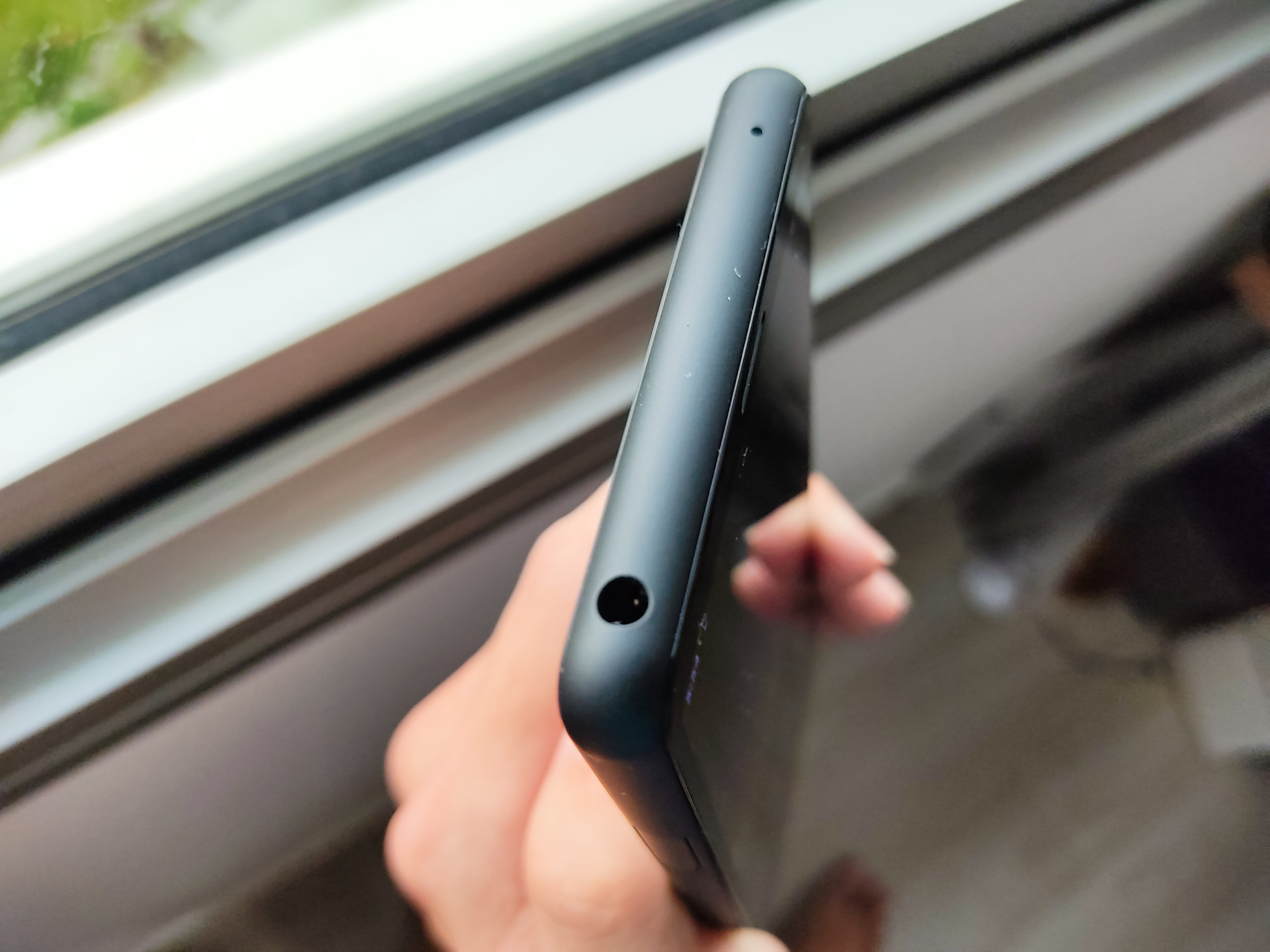 The Xperia 10 II only has a single loudspeaker. It is positioned in the grill, in the bottom chin, below the display. The loudspeaker itself isn’t overly impressive either. There is a USB-C port and a microphone on the bottom. The Type-C port supporting USB 2.0 speed and fast charging at 18W.
The Xperia 10 II only has a single loudspeaker. It is positioned in the grill, in the bottom chin, below the display. The loudspeaker itself isn’t overly impressive either. There is a USB-C port and a microphone on the bottom. The Type-C port supporting USB 2.0 speed and fast charging at 18W.
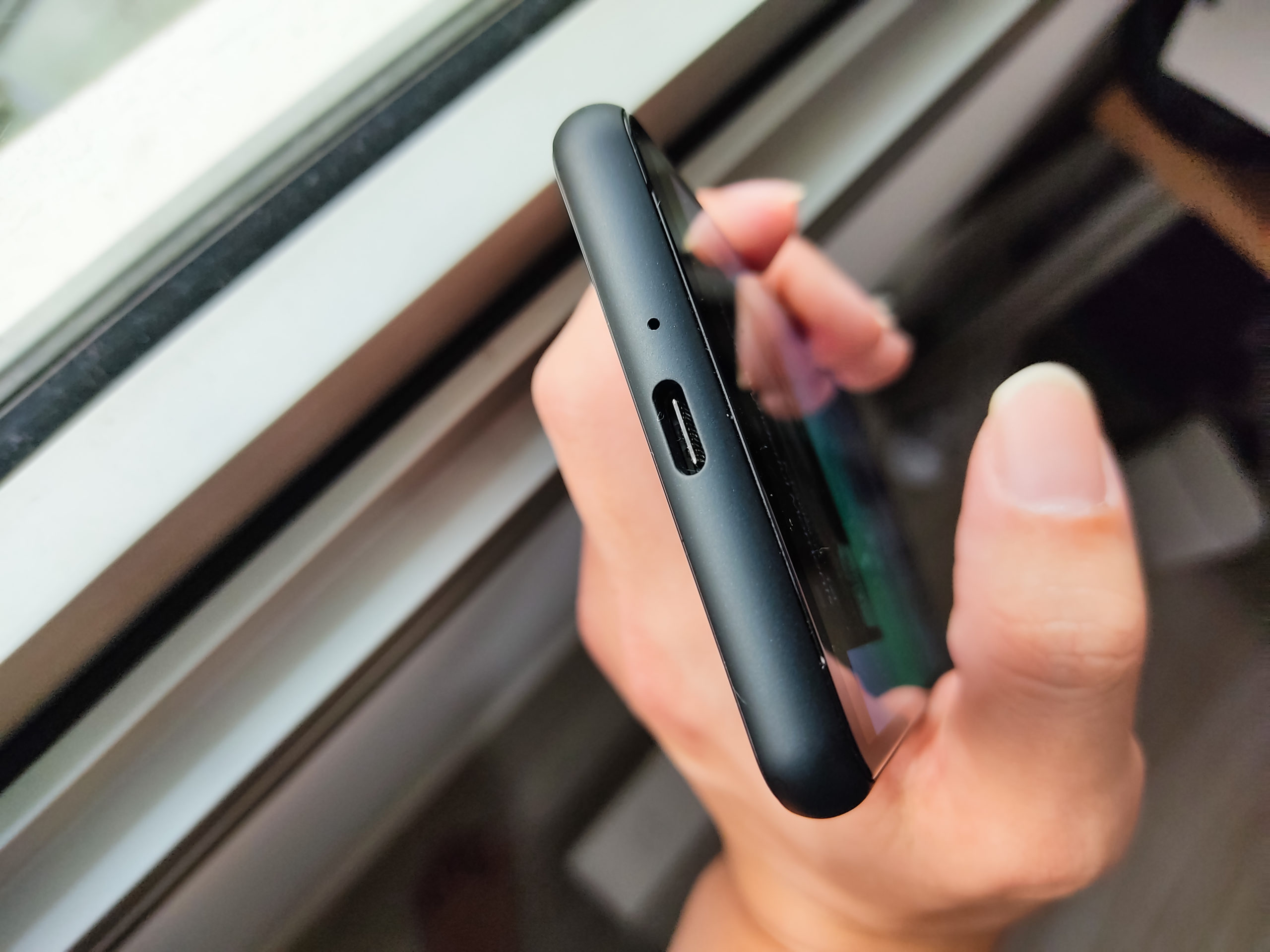
All of this is IP65/68 certified, and the SIM card tray is combined with a microSD card slot for removable storage. Overall, this design is super clean, understated, and absolutely premium. The black glass is really gorgeous!
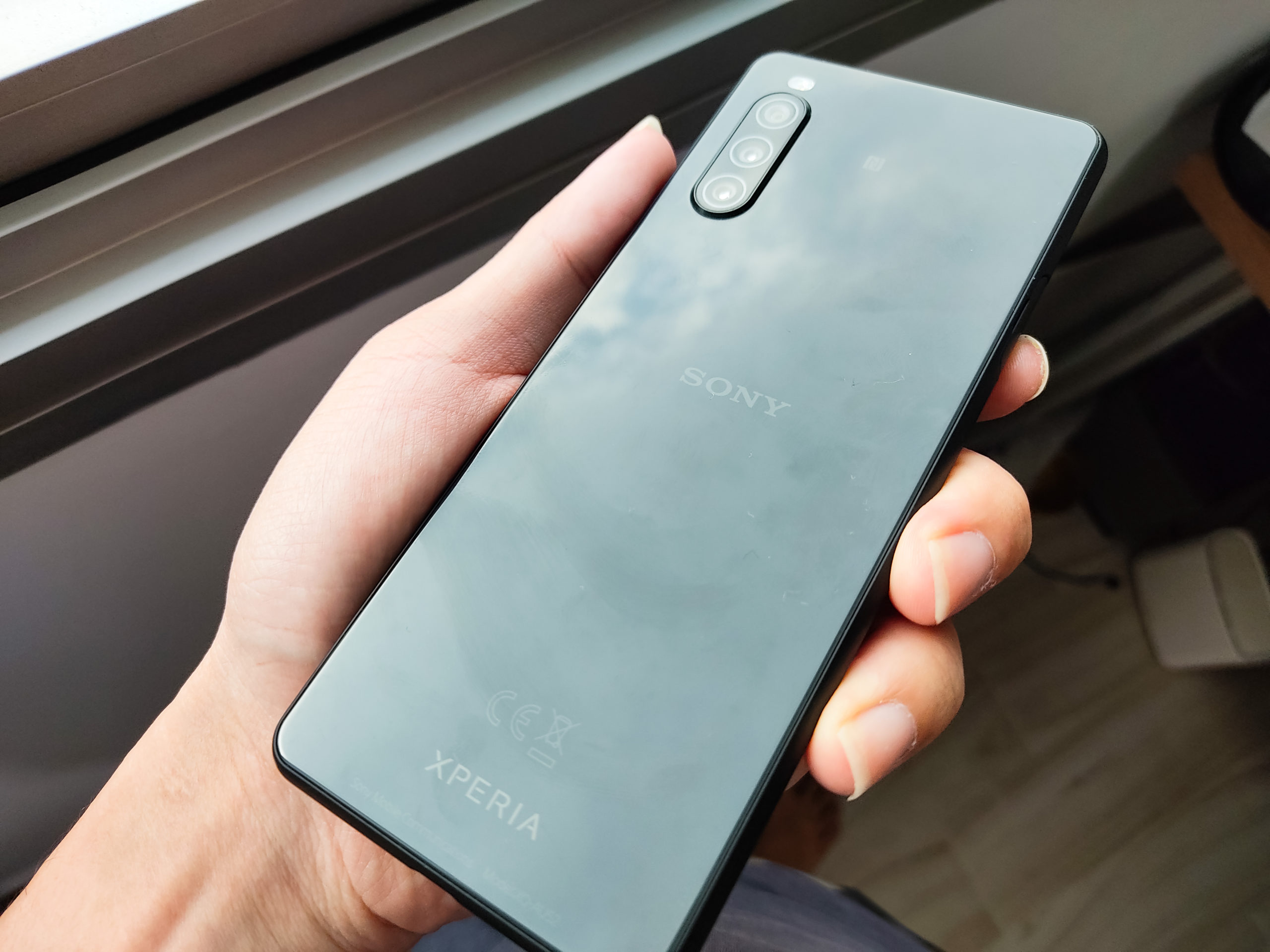
With the ratio of 21:0 wide display, Sony also included a shortcut icon for you to enable split screen for displaying two apps on one screen and it’s perfect for multi-tasking.
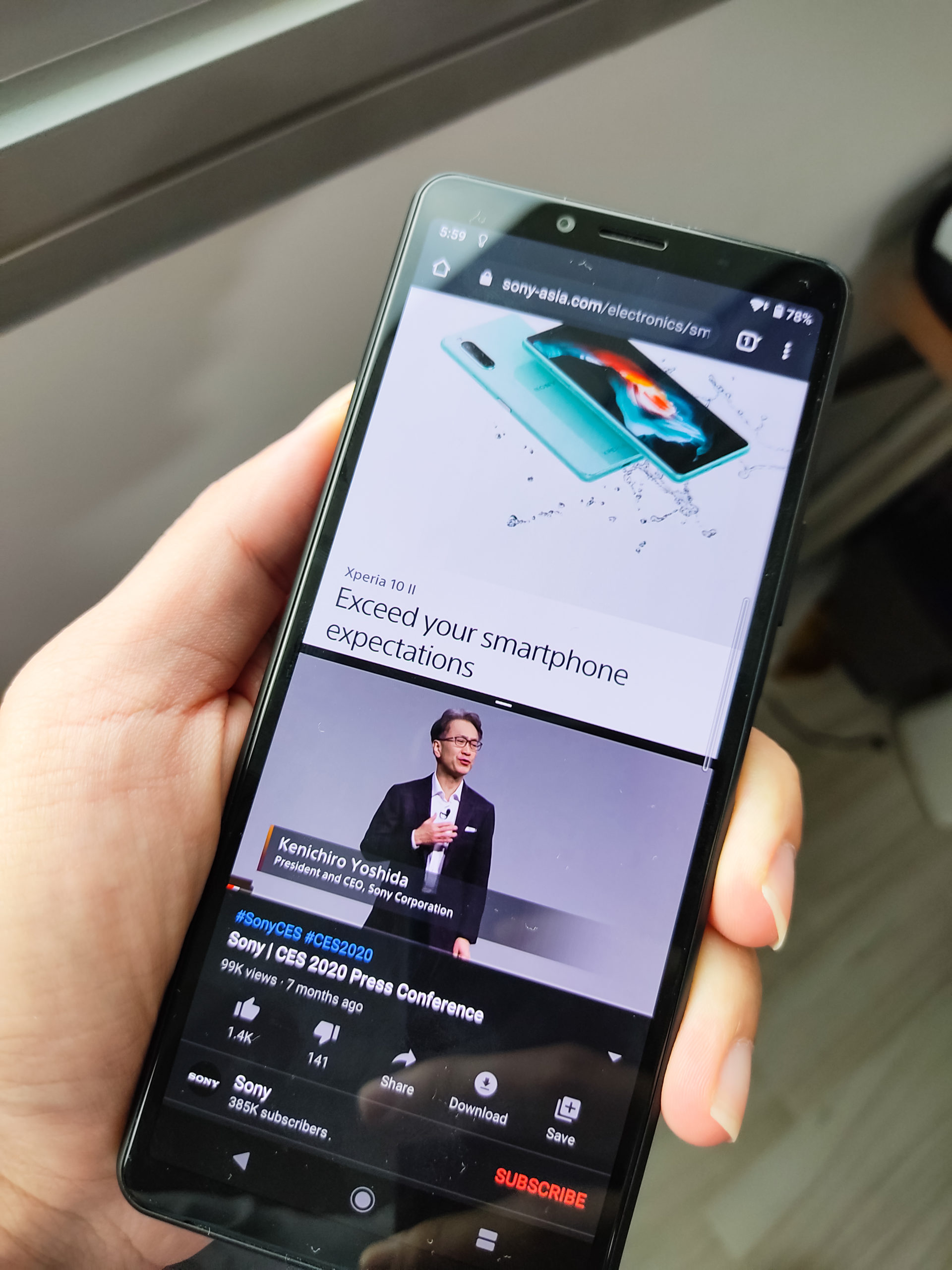
The phone has a triple-camera array, housed in a bump which juts out slightly from the rear of the phone: Wide (main): 12MP, 1/2.8″ sensor, 26mm equiv. focal length, f/2.0 aperture, Dual Pixel PDAF. Telephoto: 8MP, 1/4″, 52mm (2x), f/2.4, PDAF. Ultra wide angle: 8MP, 1/4″, 16mm, f/2.2. The camera didn’t come with OIS (optical image stabilization)

Daylight Photo and video Performance
Video remark: During our walkabout and we tested disable Electronic Image Stabilization “EIS”, while capture the video on 4K recording is much smoother. However, the 1080P 30frame with enable EIS seem working fine.
1080P 30fps EIS
1080P 30fps disable EIS
4k 30fps EIS
4k 30fps disable EIS
Main Camera: 12MP, 1/2.8″ sensor
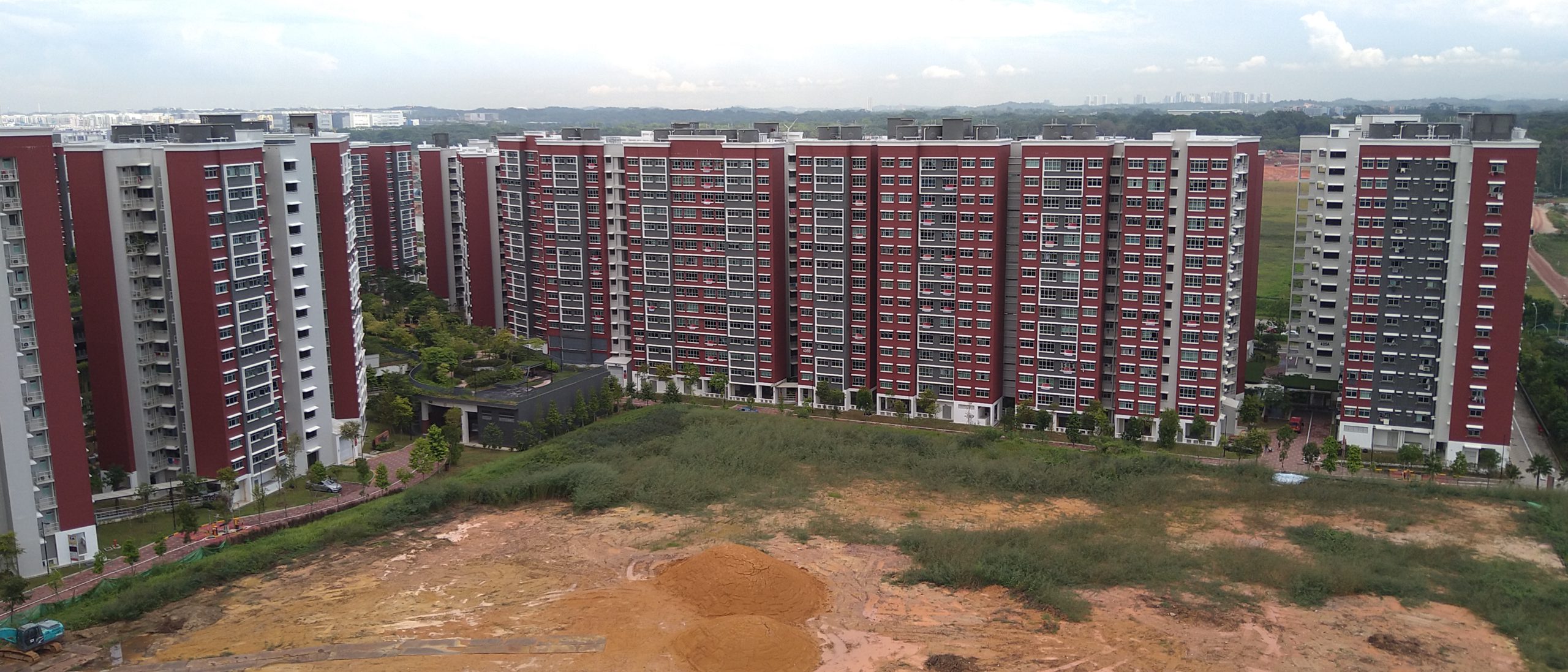
Ultra wide angle: 8MP, 1/4
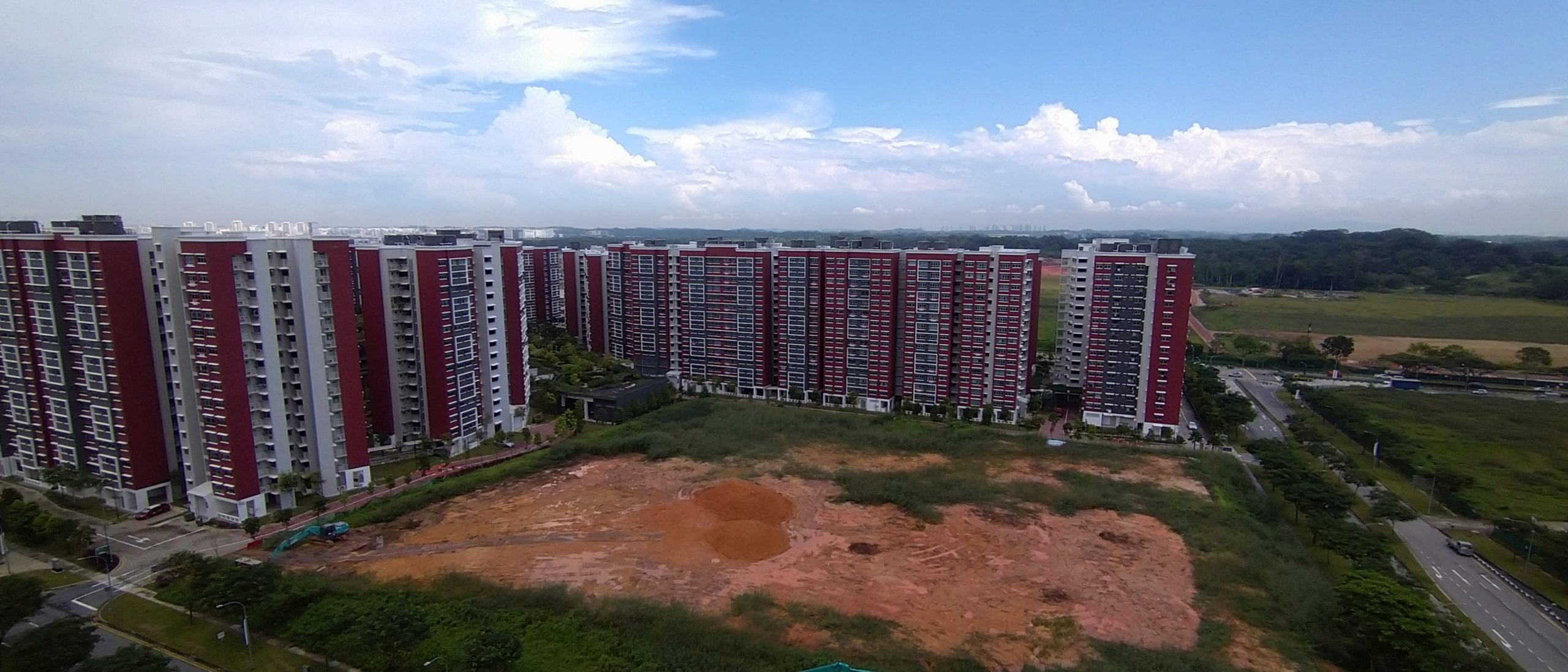
Telephoto: 8MP, 1/4
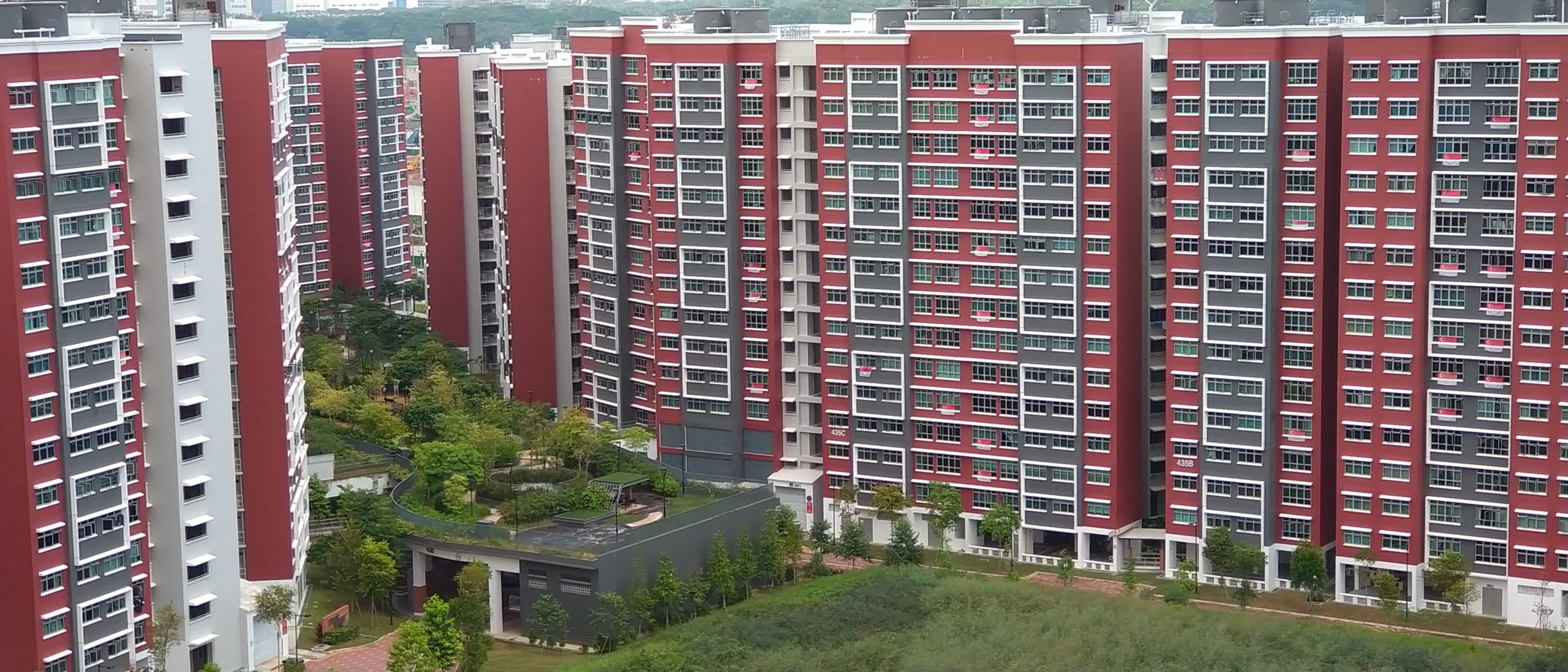
Main Camera: 12MP, 1/2.8″ sensor
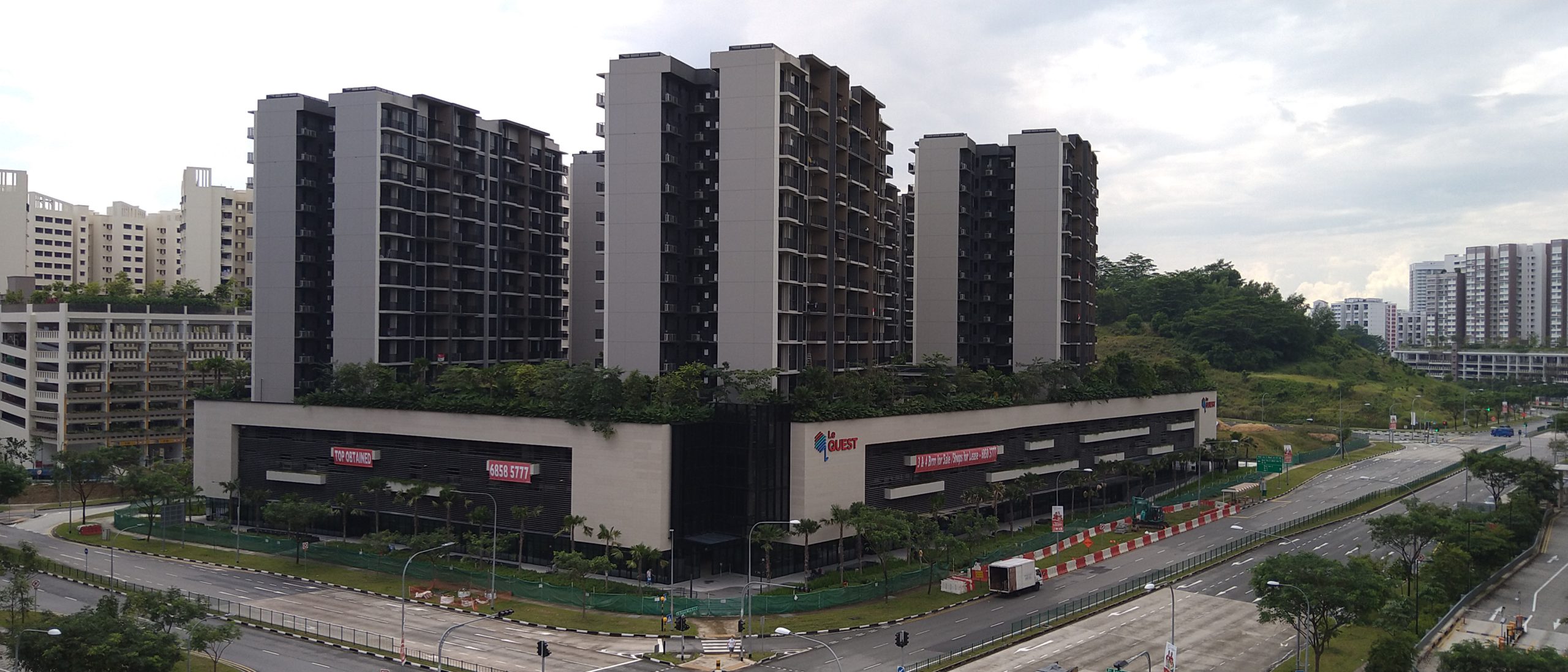
Telephoto: 8MP, 1/4
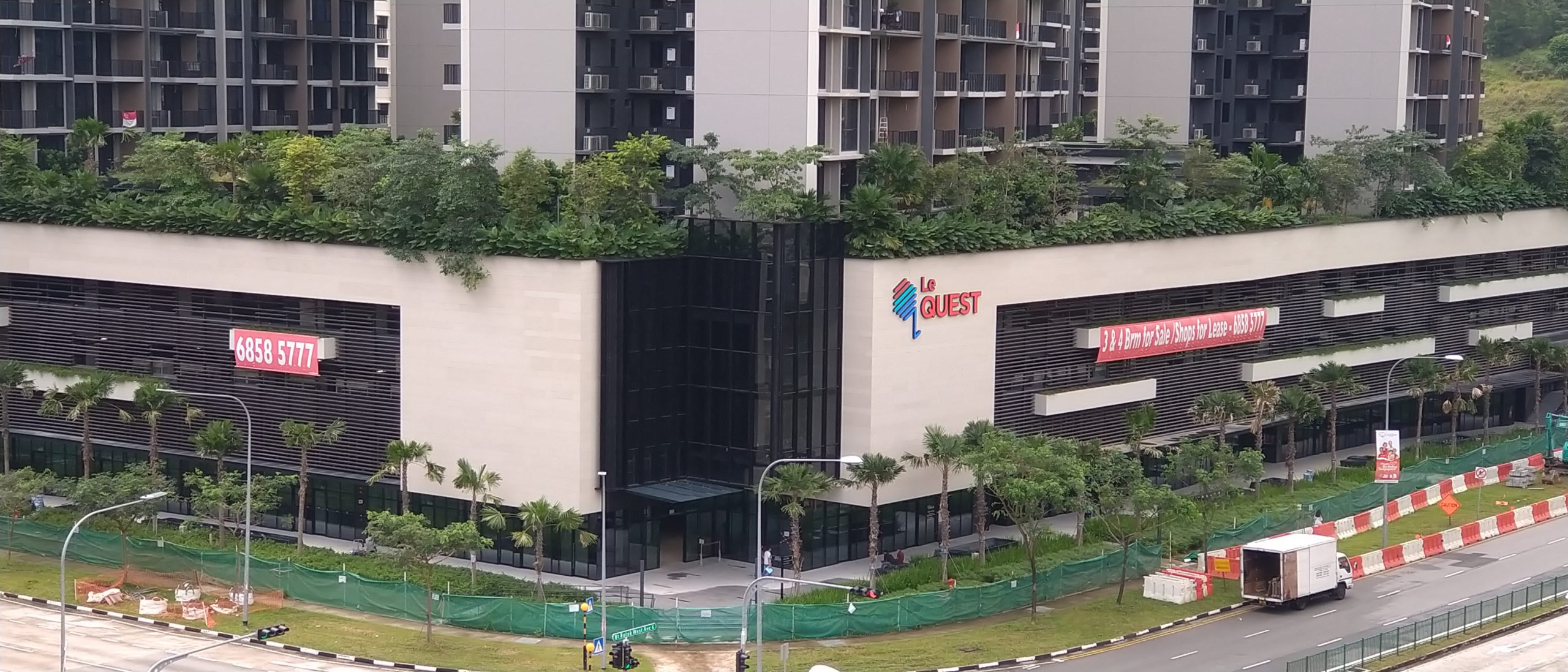
Ultra wide angle: 8MP, 1/4
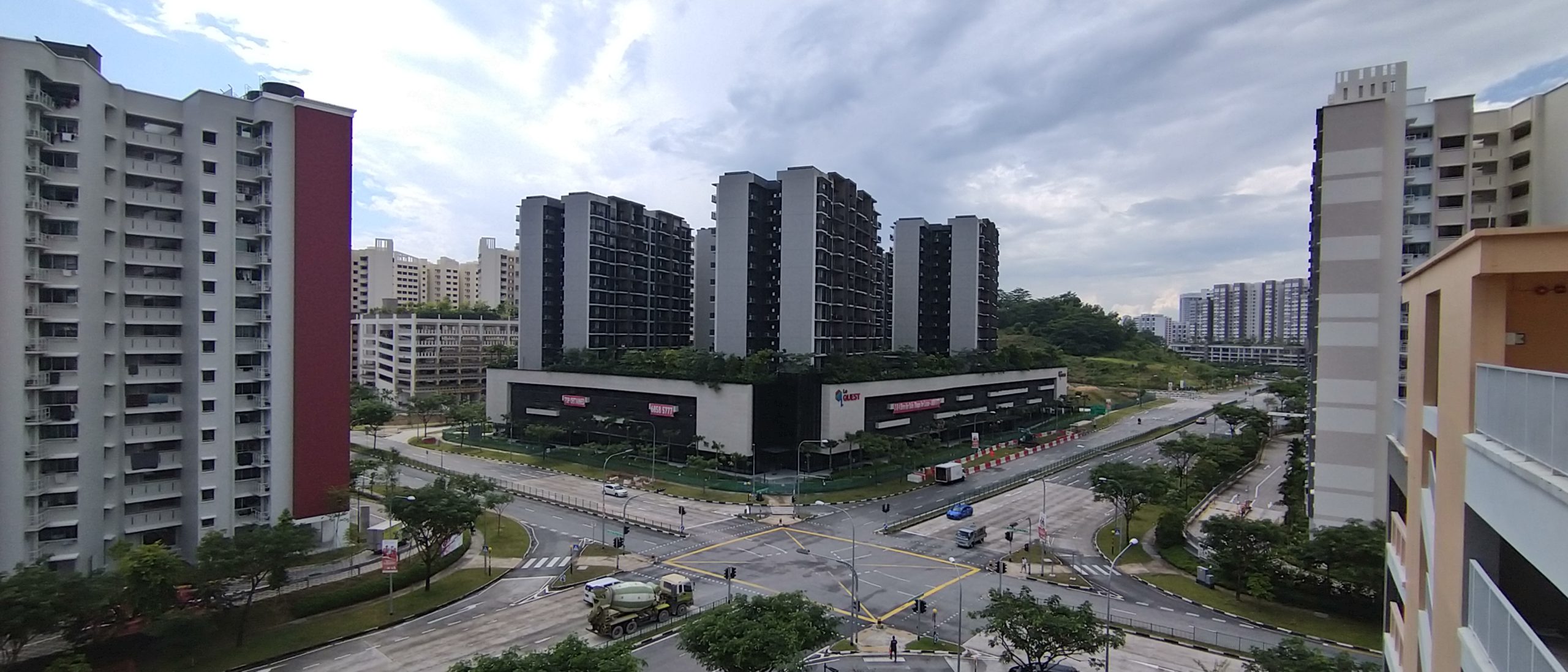
Main Camera: 12MP, 1/2.8″ sensor
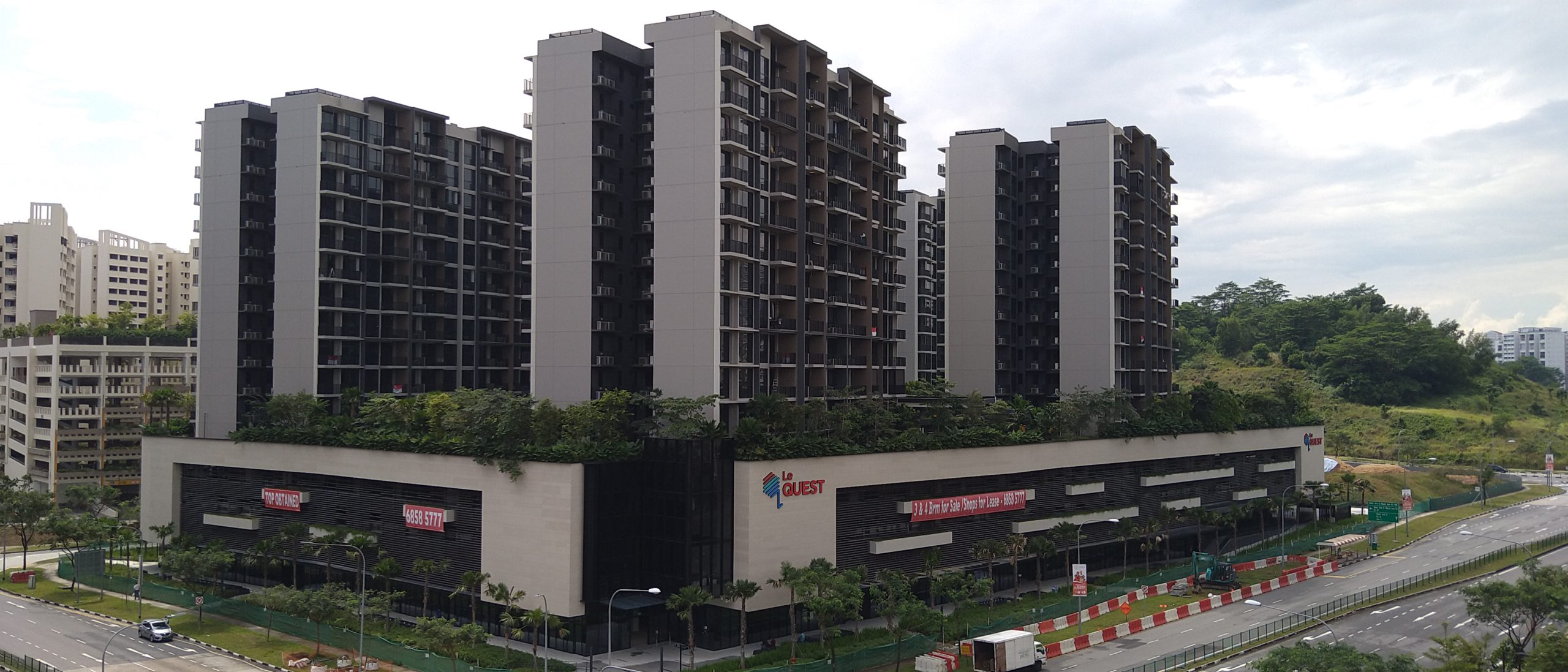
Night Photo and video Performance
Main Camera: 12MP, 1/2.8″ sensor
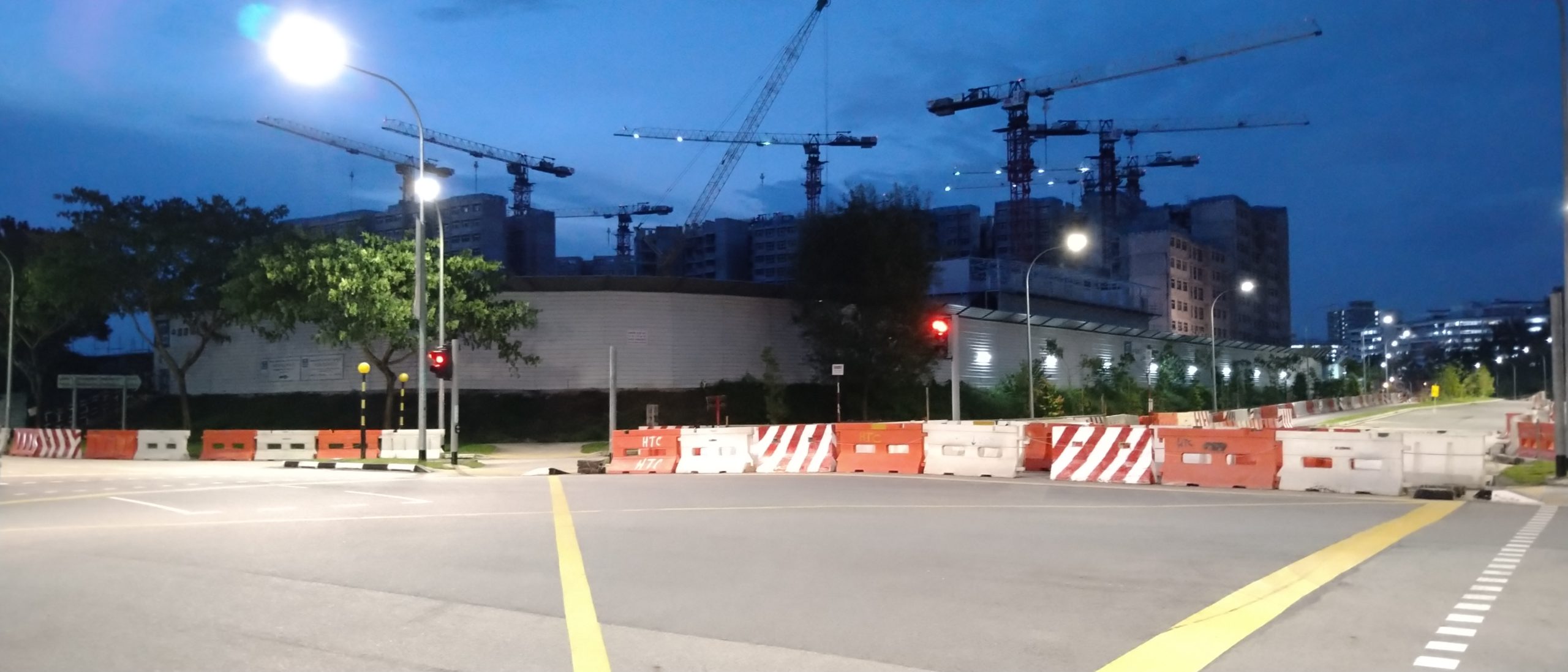
Main Camera: 12MP, 1/2.8″ sensor
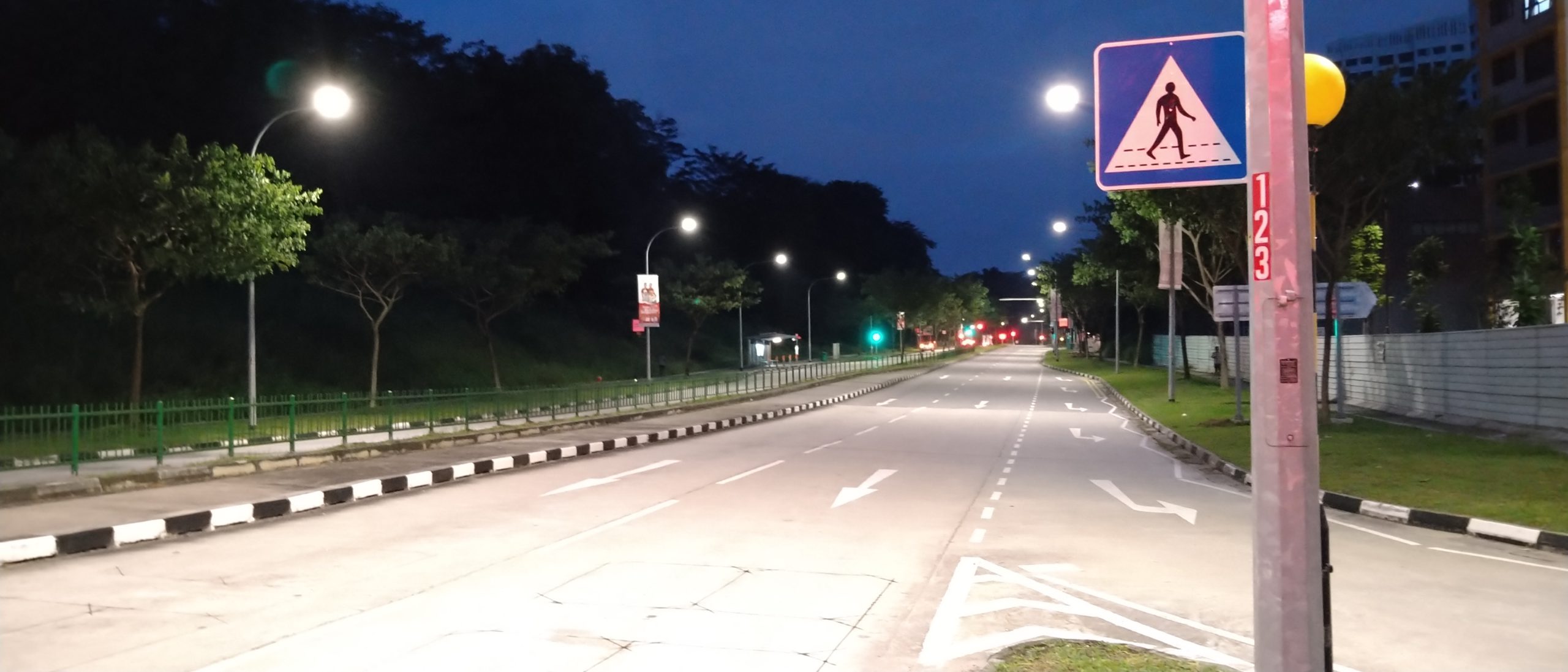
Main Camera: 12MP, 1/2.8″ sensor
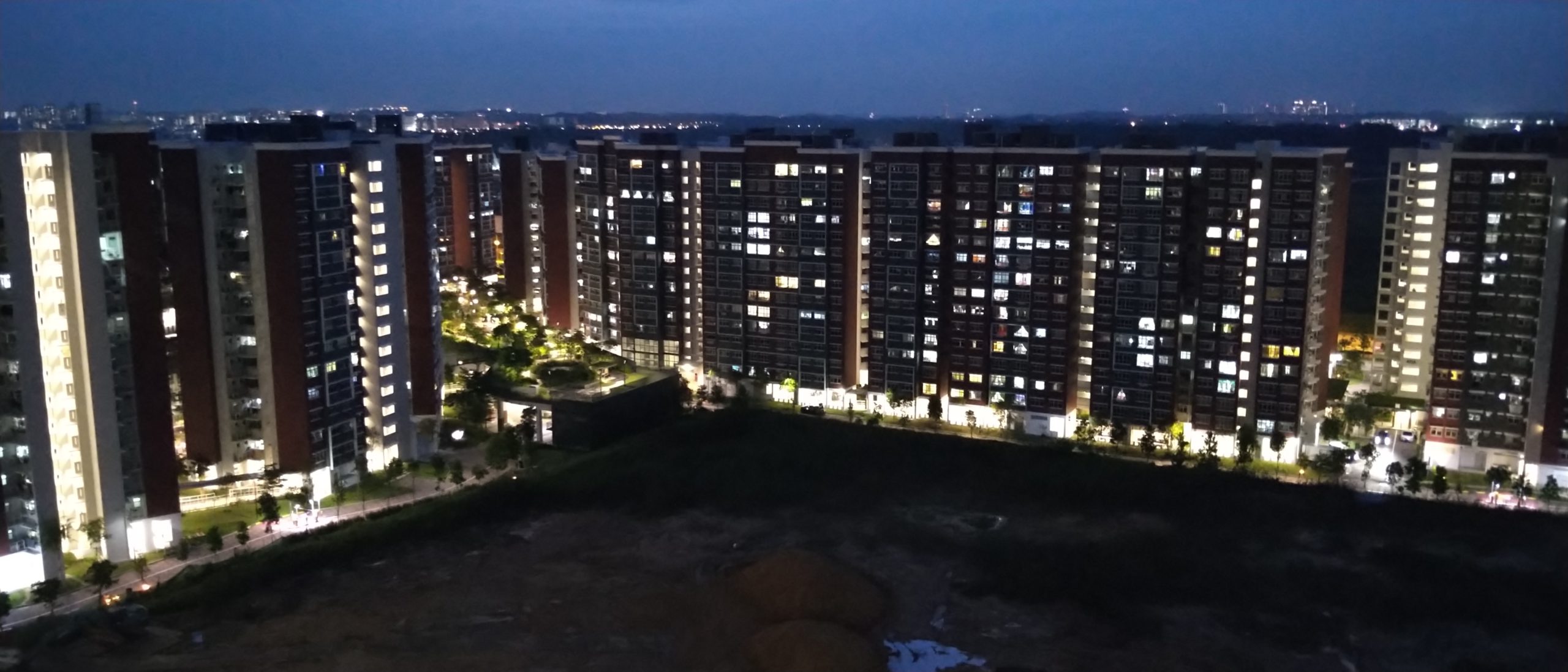
Telephoto: 8MP, 1/4
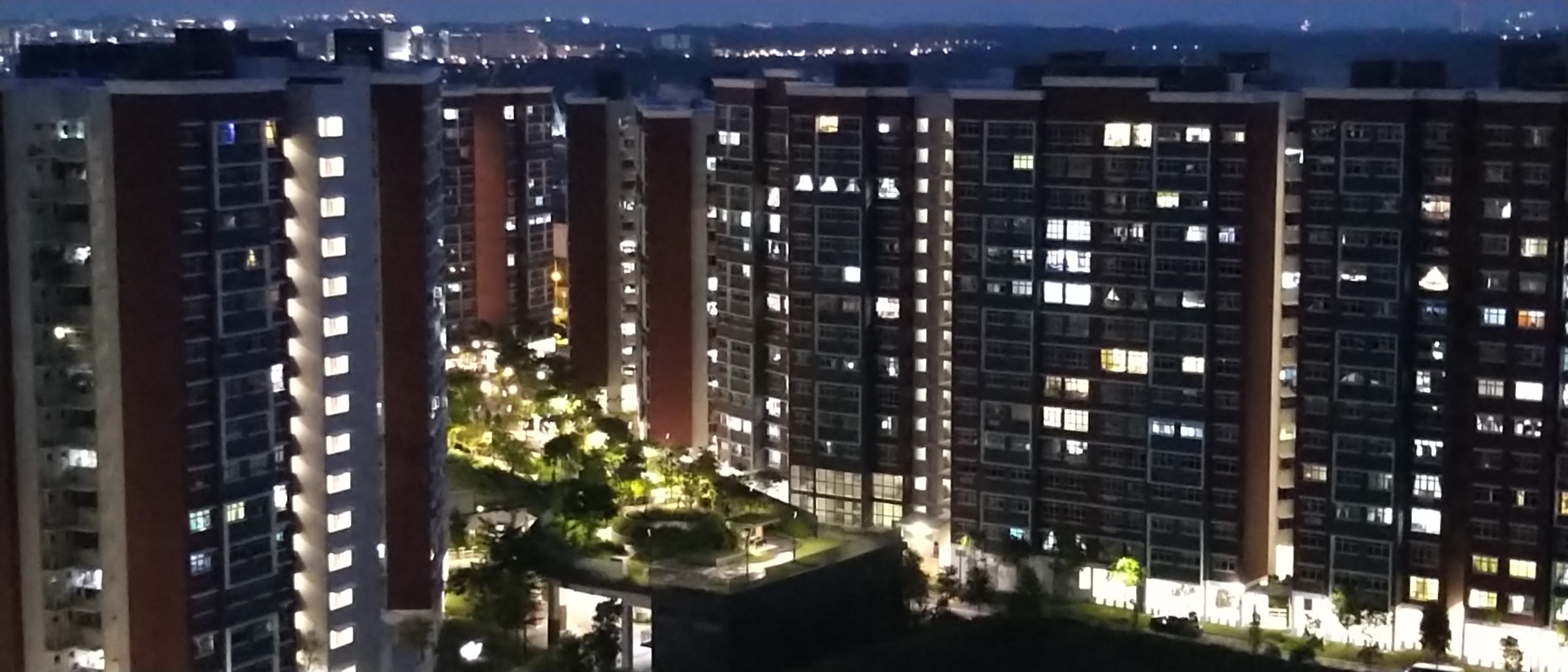
Ultra wide angle: 8MP, 1/4

Main Camera: 12MP, 1/2.8″ sensor
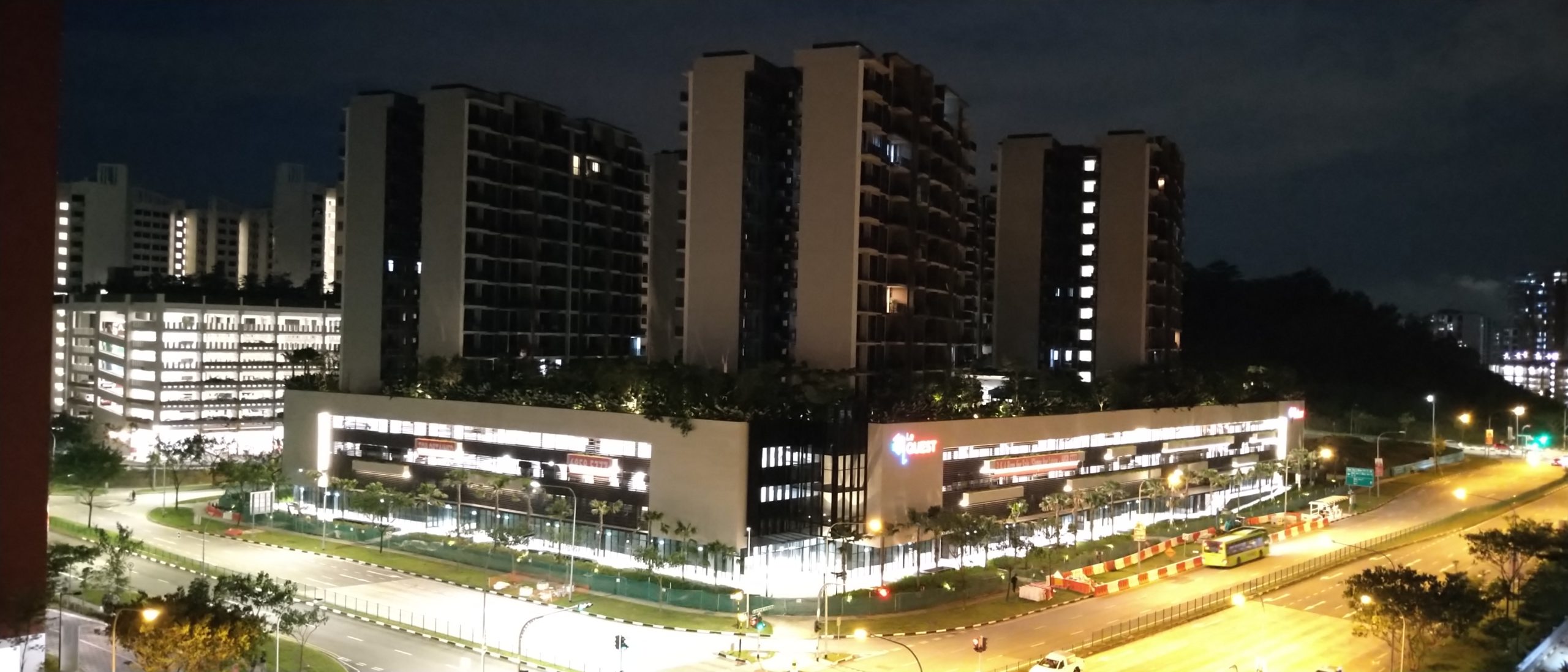
Telephoto: 8MP, 1/4
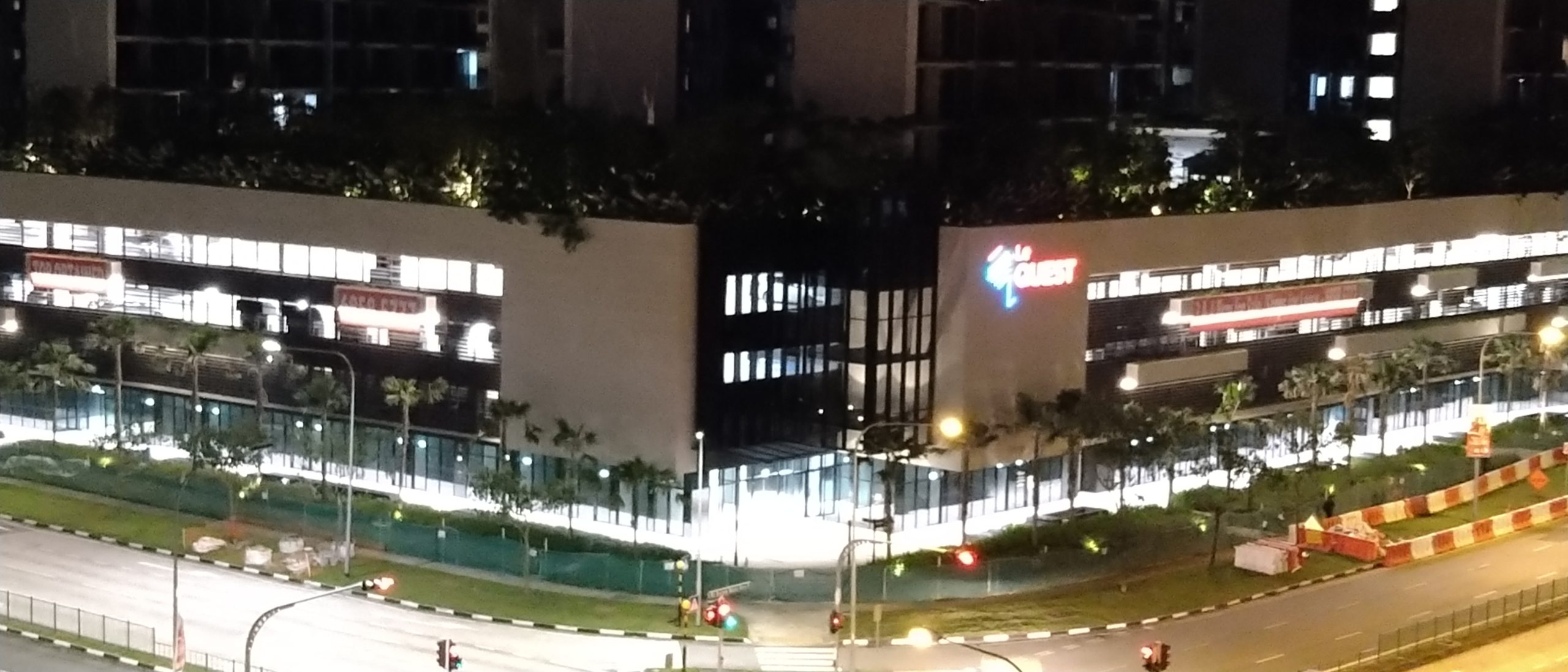
Ultra wide angle: 8MP, 1/4
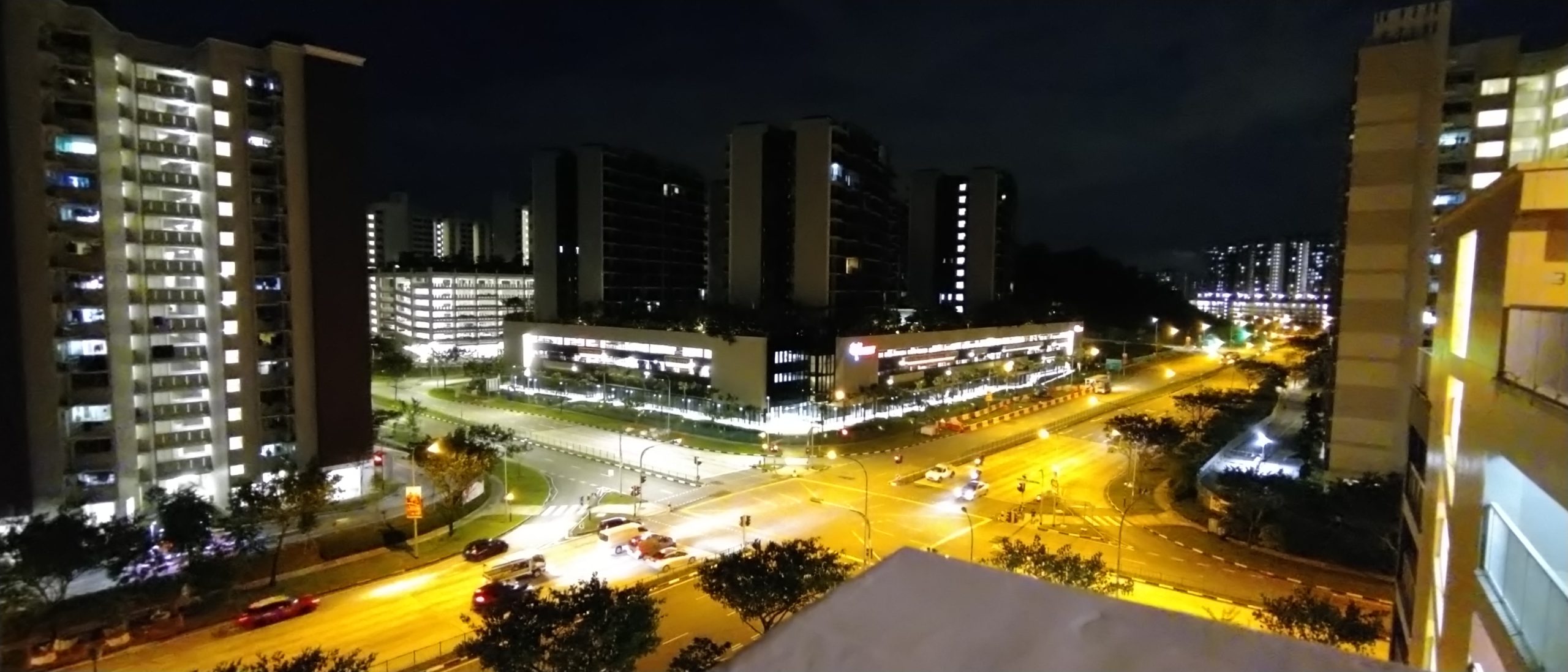
Performance, Benchmarks and Gaming
We’ll be running latest firmware and comparison with Redmi Note 9S.
| Model | Redmi Note 9S | Sony Xperia 10 II |
| CPU | Qualcomm Snapdragon 720G [8nm] | Qualcomm Snapdragon 665 [11nm] |
| GPU | Adreno 618 | Adreno 610 |
| Storage | 64GB UFS 2.1 | 128GB eMMC 5.1 |
| RAM | 4GB LPDDR4X 1866Mhz | 4GB LPDDR4X 1866Mhz |
| Firmware | MIUI Global 11.0.10 | Android 10 Build 59.0.A.6.24 |
PCMark Benchmark
PCMark for Android introduces a fresh approach to benchmarking smartphones and tablets. It measures the performance and battery life of the device as a complete unit rather than a set of isolated components. And its tests are based on common, everyday tasks instead of abstract algorithms.
| Work 2.0 | Computer Vision | Storage | Work 1.0 | |
| Redmi Note 9S | 7842 | 3985 | 12706 | 8953 |
| Sony Xperia 10 II | 6210 | 3121 | 8174 | 7553 |
3DMark Benchmark
3DMark is used by millions of people, hundreds of hardware review sites and many of the world’s leading technology companies. It’s the industry standard benchmark for graphics performance measurement, a professional-grade tool available to home users for free.
| Score | Sling shot Extrme OpenGL ES 3.1 | Sling shot Extrme Vulkan | API Overhead OpenGL 3.0 | API Overhead Vulkan | |
| Redmi Note 9S | 2500 | 2546 | 2275 | 381860 | 447999 |
| Sony Xperia 10 II | 1178 | 1140 | 1130 | 200486 | 216712 |
A1 SD Benchmark
Benchmark your phone, tablet or any other Android based device storage, including but not limited to SD cards, Multimedia cards, Internal device memory, RAM, USB flash drives and other storage media.
| Ram | Storage Write | Storage Read | |
| Redmi Note 9S | 21195.1 | 326.96 | 466.67 |
| Sony Xperia 10 II | 5615.22 | 185.92 | 275.66 |
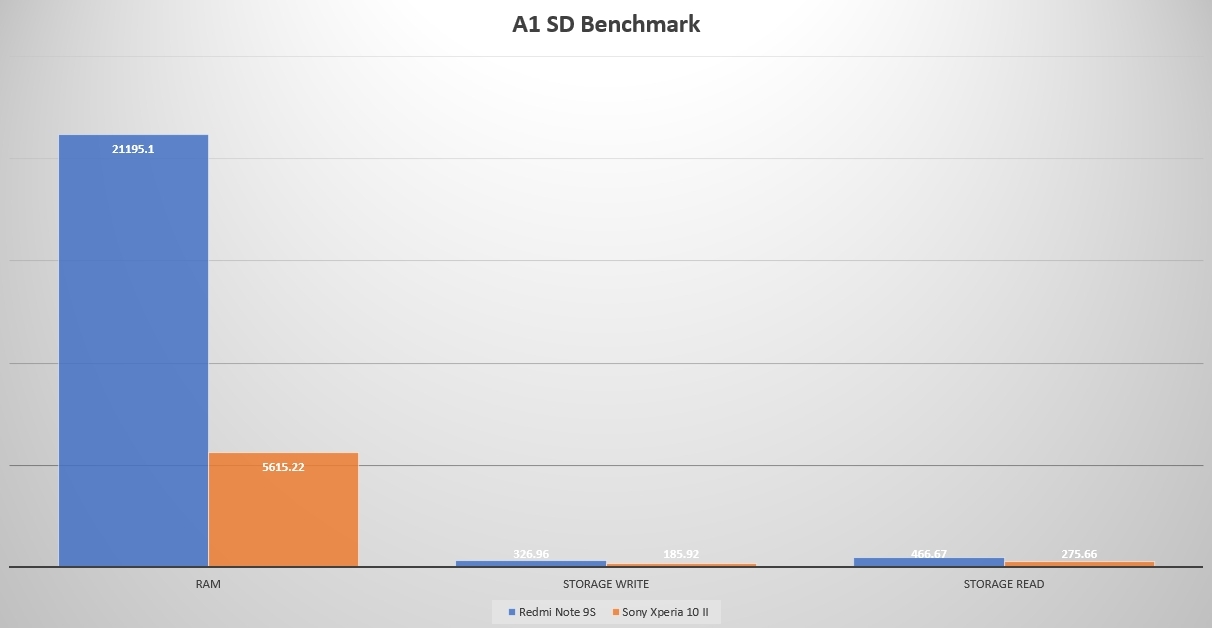
Geekbench 5 Benchmark
Geekbench 5 is a cross-platform benchmark that measures your system’s performance with the press of a button. How will your mobile device or desktop computer perform when push comes to crunch? How will it compare to the newest devices on the market?
| Single Core | Multi-Core | |
| Redmi Note 9S | 568 | 1693 |
| Sony Xperia 10 II | 313 | 1403 |
